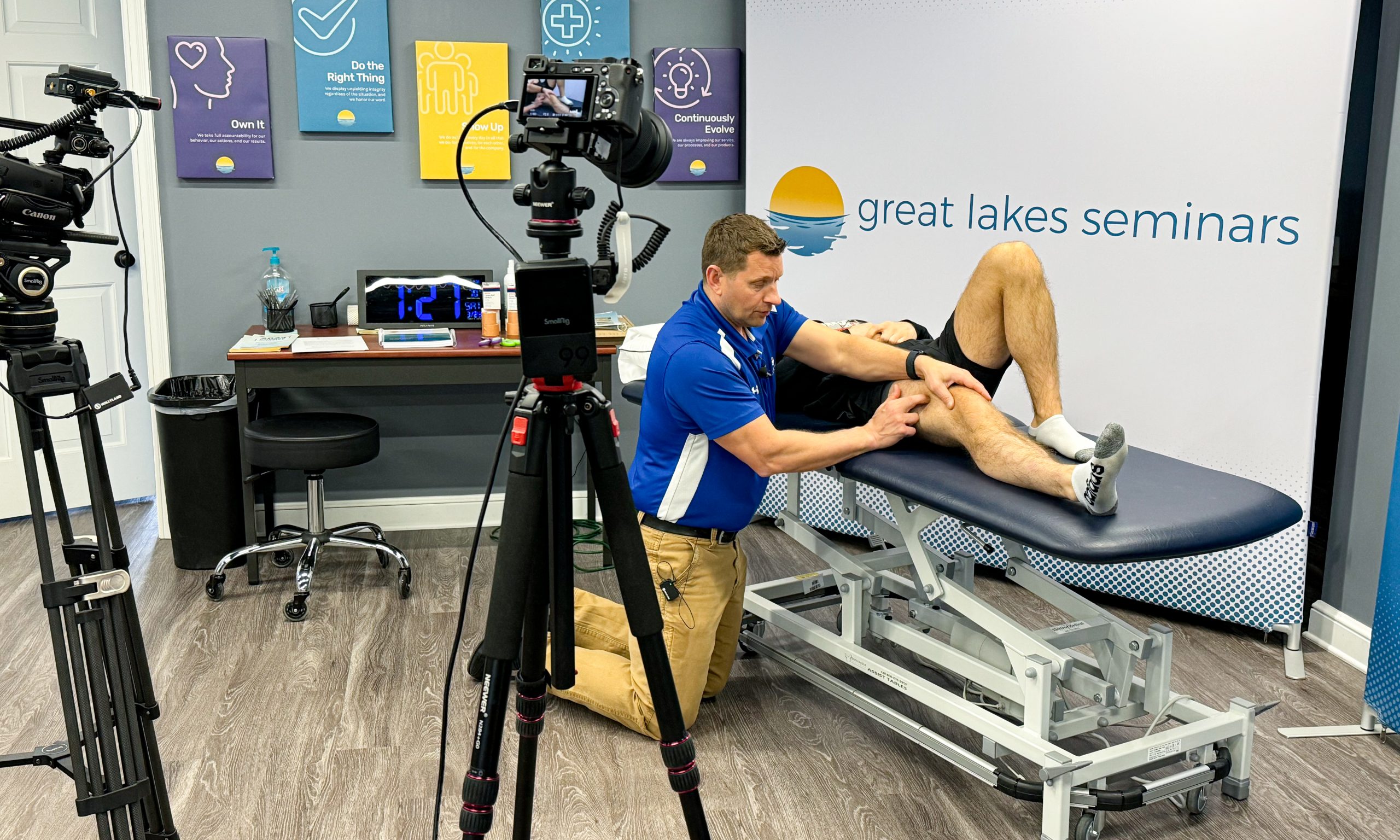The Importance of the Test-Treat-Retest Concept

While doing the AV for many of our Live Hybrid courses, I get to see our great instructors in action. The instructors of the last few courses (MFR, Anatomy, and Lumbar) have all spent time discussing one concept. The concept of test-treat-retest and the impact it can have on the success you have with your patients. Three different courses, but the consistent discussion of test-treat-retest (similar to our other courses).
Evolution of Test-Treat-Retest
Many clinicians have experienced the frustration of not knowing which techniques are actually helping patients improve and which aren’t. Traditionally, treatment is provided during a visit, and progress is assessed afterward—looking for increased range of motion, decreased pain, or improved function. While this approach works, it can be inefficient and make it difficult to pinpoint what is truly driving improvement.
The test-treat-retest approach changes that. By testing after every 1–2 techniques, clinicians can immediately see if a specific treatment produces a meaningful change. This allows them to focus on the techniques that have the most impact, while avoiding those that don’t. Patients appreciate this approach because they can see progress in real time and understand the process behind their treatment. Explaining the results as you go helps patients grasp their dysfunction and feel more involved in their care.
Seeing Test-Treat-Retest in Action
In our courses, clinicians love seeing this concept demonstrated. For example, in our Comprehensive Shoulder course, a registrant’s shoulder flexion might be tested, then the SC joint treated and retested—showing little improvement. The AC joint might be treated next, again with minimal change. Finally, when the GH joint is treated, a significant increase in flexion becomes clear, pinpointing the source of the dysfunction.
This process helps clinicians understand exactly what contributes to patient improvement. Integrating this into your practice can lead to more efficient treatments and better outcomes for patients.
Keys to implementing test-treat-retest into your daily treatment:
- Start doing it with 1-2 patients a day to start. Similar to most things, implement it gradually to get comfortable and efficient with it.
- Explain to your patient what you are doing. Let them know that you plan to go through 4, 6, 8 or however many techniques to try and determine what works and what does not. This sets the stage and helps them understand why you may be doing things that do not have any results.
- Explain to your patient after each thing you treat, letting them know that it is good that you now know that something is not contributing to their pain so you will not focus on that, or that since you just got significant improvement, you will continue to work on that area. Patients love to see that you are working through a process to get them better and you have a plan.
- Do a good job documenting what you did, what worked and what did not work. This will help you start the following treatment session focusing on what worked and not wasting time with what did not help. It will also help you get on to other things to test-treat-retest.
In a time of increased focus on outcomes and often decreased time spent with each patient, the concept of test-treat-retest sets you up to have more success with each patient visit, eventually helping get people better, faster.
Questions? Check out these FAQs!
The test-treat-retest concept is a clinical approach where you test your patient’s movement or pain before treatment, apply one or two specific techniques, and then immediately retest to see if there’s improvement. This helps you clearly see which techniques are making the biggest impact.
It helps you identify exactly what works for your patients — and what doesn’t — in real time. This makes your treatments more efficient and helps your patients understand their dysfunction and progress. It also builds trust, since they can see immediate, measurable changes after each intervention.
Start small. Try implementing it with one or two patients a day until it becomes part of your natural flow. With repetition, you’ll get faster and more confident identifying the techniques that drive real change.
Be transparent. Let your patients know you’ll be trying a few different techniques to figure out which one helps the most. When you explain each step — especially when something doesn’t work — it helps patients appreciate your process and understand that you’re methodically finding the root cause of their issue.
Good documentation helps you track progress between sessions and keeps you focused on the techniques that created measurable improvement. It also saves time by preventing you from repeating ineffective treatments.
Yes! By focusing on what works, you maximize each treatment session and help your patients get better, faster. It also improves your efficiency and clinical reasoning — two things that benefit both you and your patients.
Many of our Great Lakes Seminars courses integrate the test-treat-retest approach during labs and demonstrations. Instructors show how to test, treat, and immediately reassess to pinpoint dysfunction and improve clinical decision-making.
Share this article:


